I can’t make the decision for you, but I can walk you through my process, Choose-Your-Own-Adventure style.
When I buy a piece of copper online, I decide at the point of purchase whether I want to have the piece retinned or not. This is because I have a one-time opportunity to save some money: if I send it directly to the retinner when I buy it, I don’t need to pay for shipping to me and then again when I send it to the retinner. Instead, I pay once for the shipping to the retinner, who receives it, restores it, and then sends it on to me, reusing the same packing materials. I eliminate one leg of shipping and save some time.
But I don’t want to refurbish everything. It costs money, and it’s also a physical process for the piece — the interior is ground out to get the tin off and the exterior is throughly polished. For pieces in rough shape, it’s an easy decision to have them restored right off the bat. But some pieces are in a semi-restored state and I need to decide whether I can accept them as they are or if they need some work before I can enjoy them.
Here’s how I make this decision. To make this a little more fun and interactive, I’m trying out a “Choose-Your-Own-Adventure” format — click into the various answers and follow the directions to arrive at the end decision I would make in each case.
Question 1: What are my intentions with this pan?
The state of the tin matters to me and will be the primary driver in my decision. I proceed to Question 2.
The state of the interior tin doesn’t matter to me at the moment. I’m going to want to look at the rest of the pan to decide if it’s worth sending to the retinner for the restoration and repair process. I skip to Question 3.
Question 2: How would I characterize the interior tin?
A pan like this definitely needs to be retinned. I skip to Question 4.

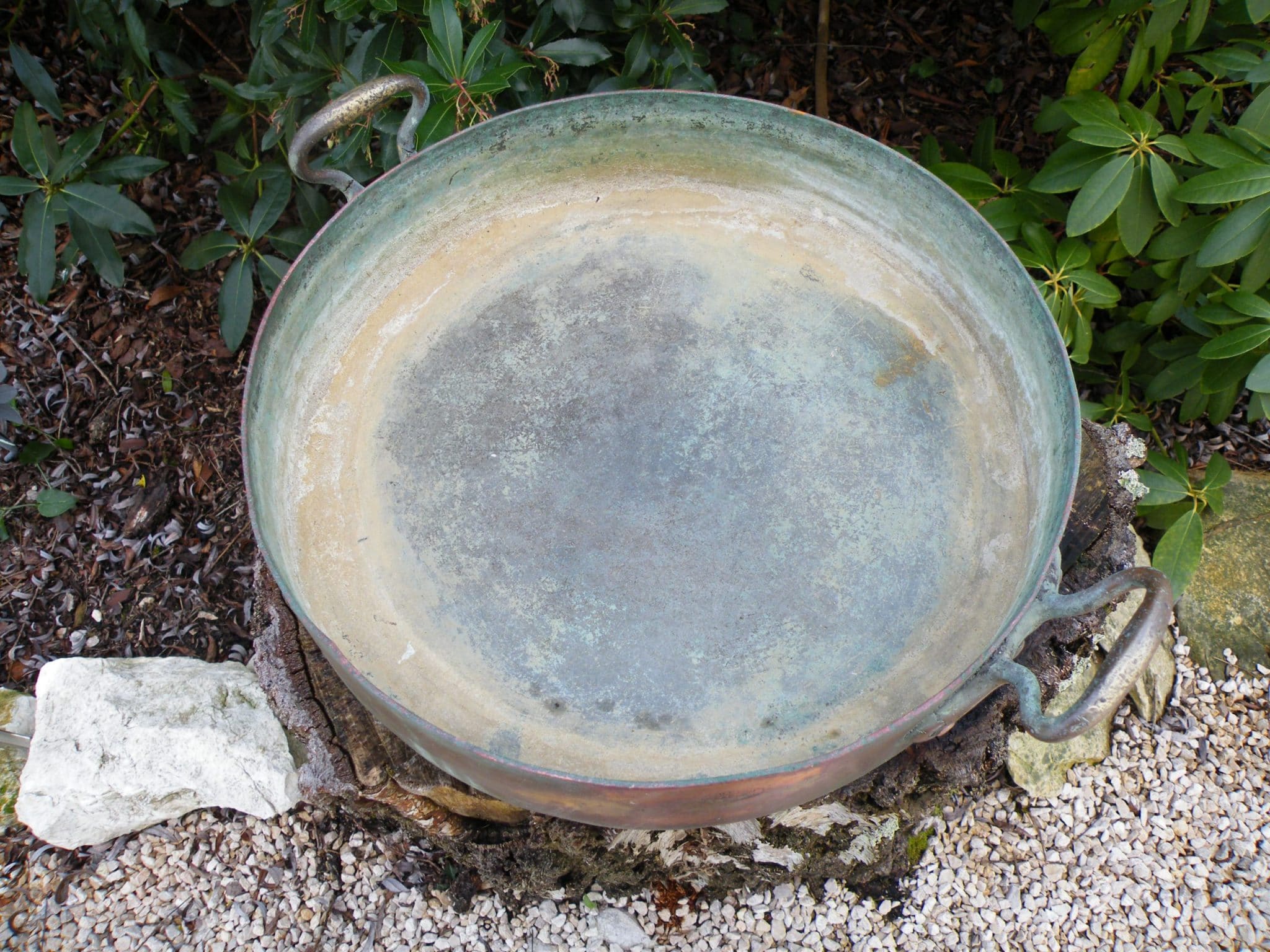

The tin is probably heavily oxidized. This oxidation isn’t toxic, but I’m going to want to give it a thorough abrasive scrubbing before I use it for cooking. If the tin is already old and thin, I could scrape right through to the underlying copper.
I’m probably better off retinning this, as I don’t know if the tin is thick enough to withstand the thorough surface cleaning it needs. I skip to Question 4.




This is probably middle-aged tin — it’s been used for cooking and has picked up patches of oxidation. The oxidation isn’t toxic, but I’d give the pan a good wash and gentle but insistent scrub before using it. If the tin is still silvery in some areas, it’s probably thick enough to withstand this cleaning.
I could live with this tin, but I want to look at the rest of the pan before I make my decision. I proceed to Question 3.


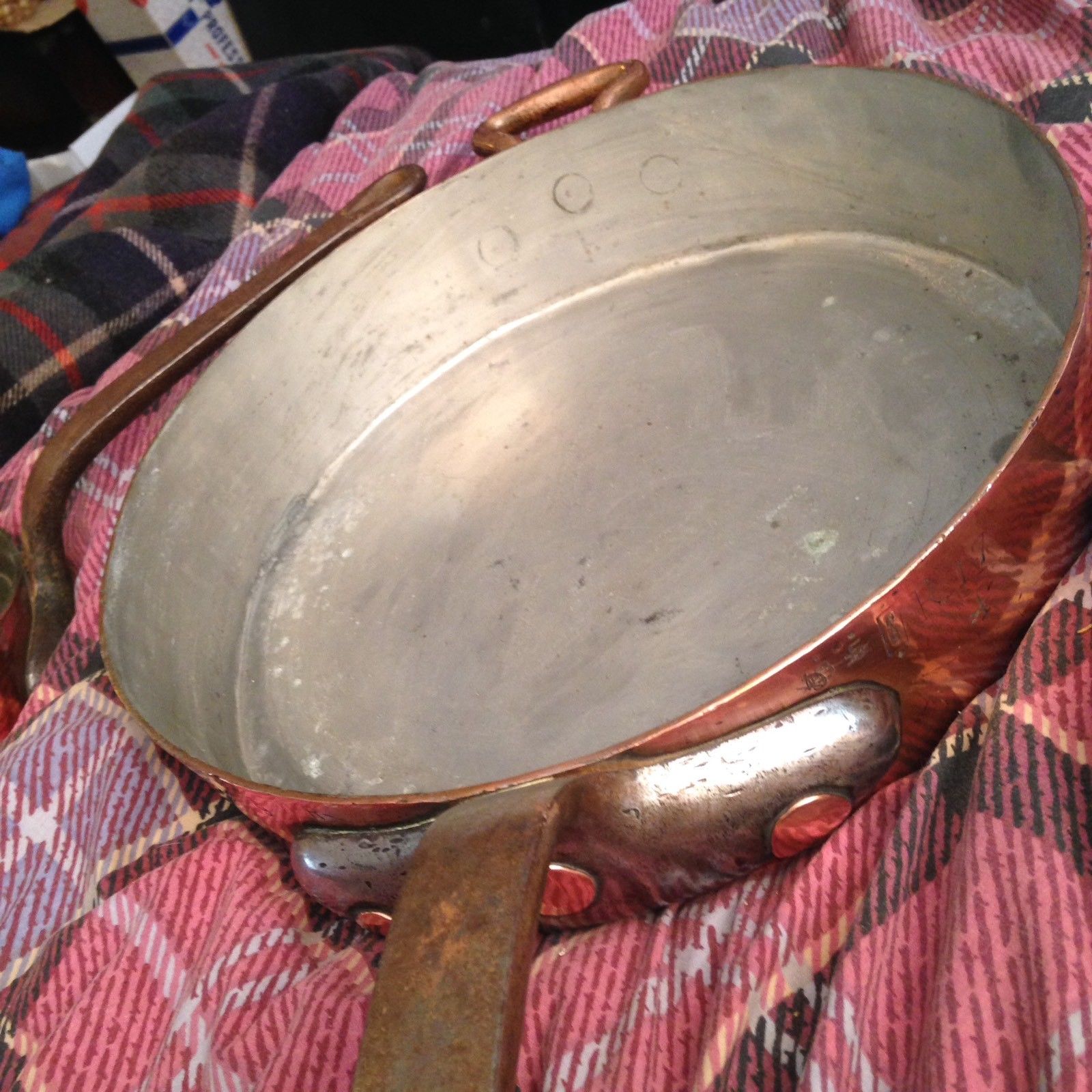
This is probably vintage “new old stock” that was used very lightly (or never at all) and has sat on a shelf for a couple of decades. Good news: I love this tin — it has hardened into an ideal cooking surface. (My daily-use Gaillard saucepans came to me like this and have since mellowed to a uniform even gray.) I’d give the pot a thorough wash with soap and water, a gentle scrub with a non-abrasive sponge, and it’s good to go. I skip to Question 4.


Tin looks great! I skip to Question 4.
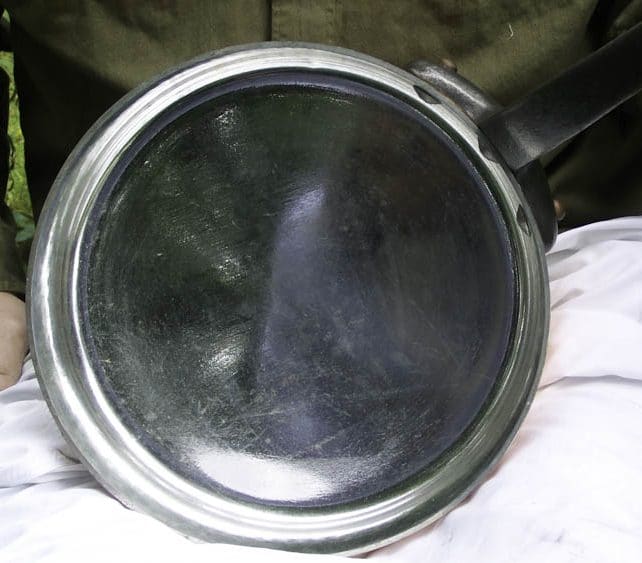
Question 3: Does the pan have problems that need fixing?
When I see really dark grody stuff on the outside of a pan I know it’s going to take a lot of effort to get it off. In some cases I’ve had to use steel wool with acetone or naphtha. It’s doable, but it takes time and effort. However, a retinner can handle this in minutes with strong cleaning chemicals and mechanical polishing machines.
- If I’m fine with working on a few square inches with my own elbow grease, I continue working through Question 3.
- If there’s a lot of surface discoloration and I don’t think I’m up for it, it’s worth retinning to give the copper a thorough cleaning and polish. I proceed to Question 4.
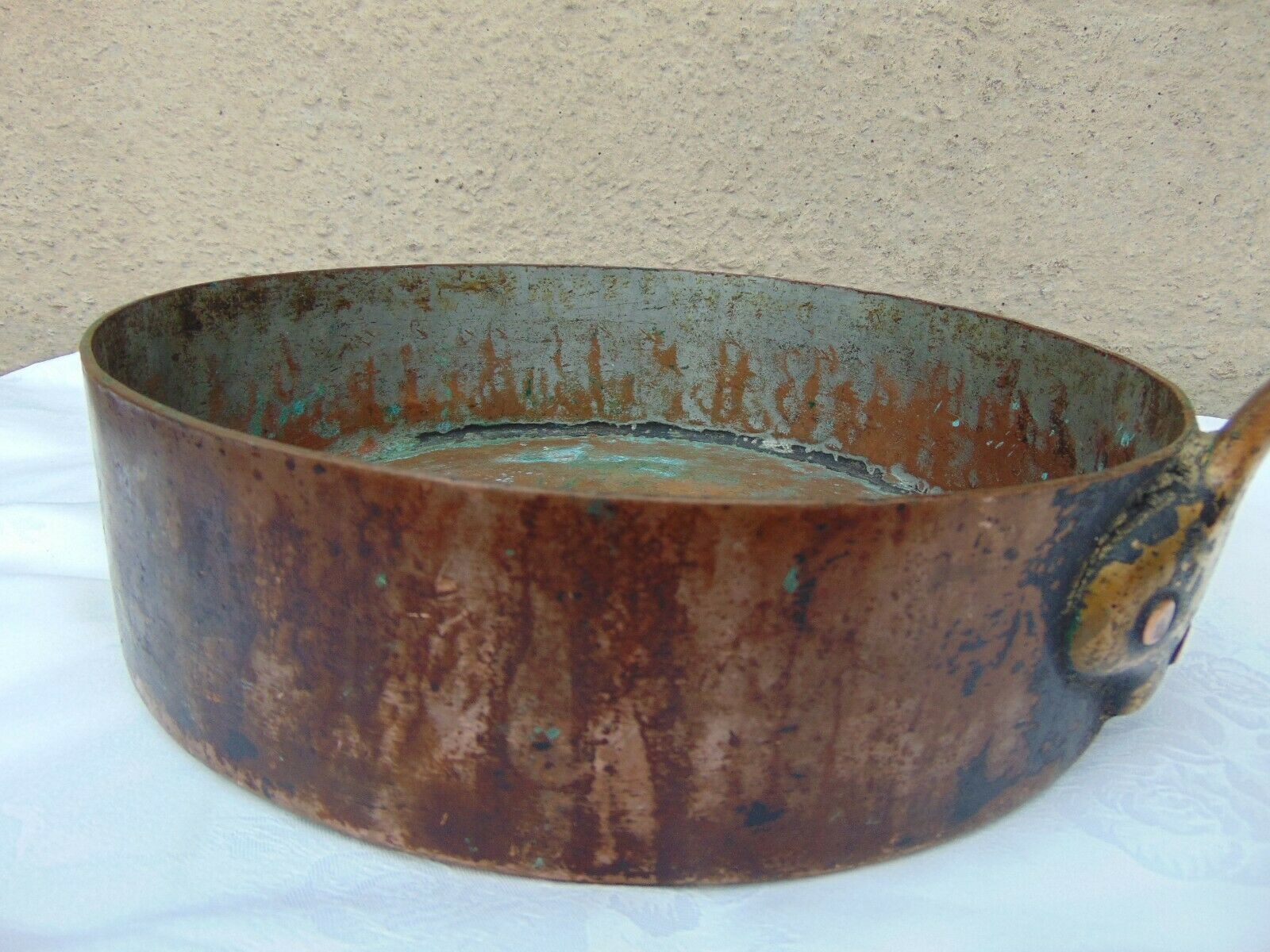
Iron is vulnerable to rust, and oily buildup around a handle can trap moisture and accelerate the process. Once the iron begins to rust, the oxidized compounds can, in turn, attack and corrode the copper. It’s important to prevent this, so I clean and dry the handle area carefully.
If the pot has already got crud around the iron handle, it’s one of the strongest cases for a proper retinning because the chemical caustics used for retinning will clean all this stuff off far more thoroughly than I can do at home. I proceed to Question 4.

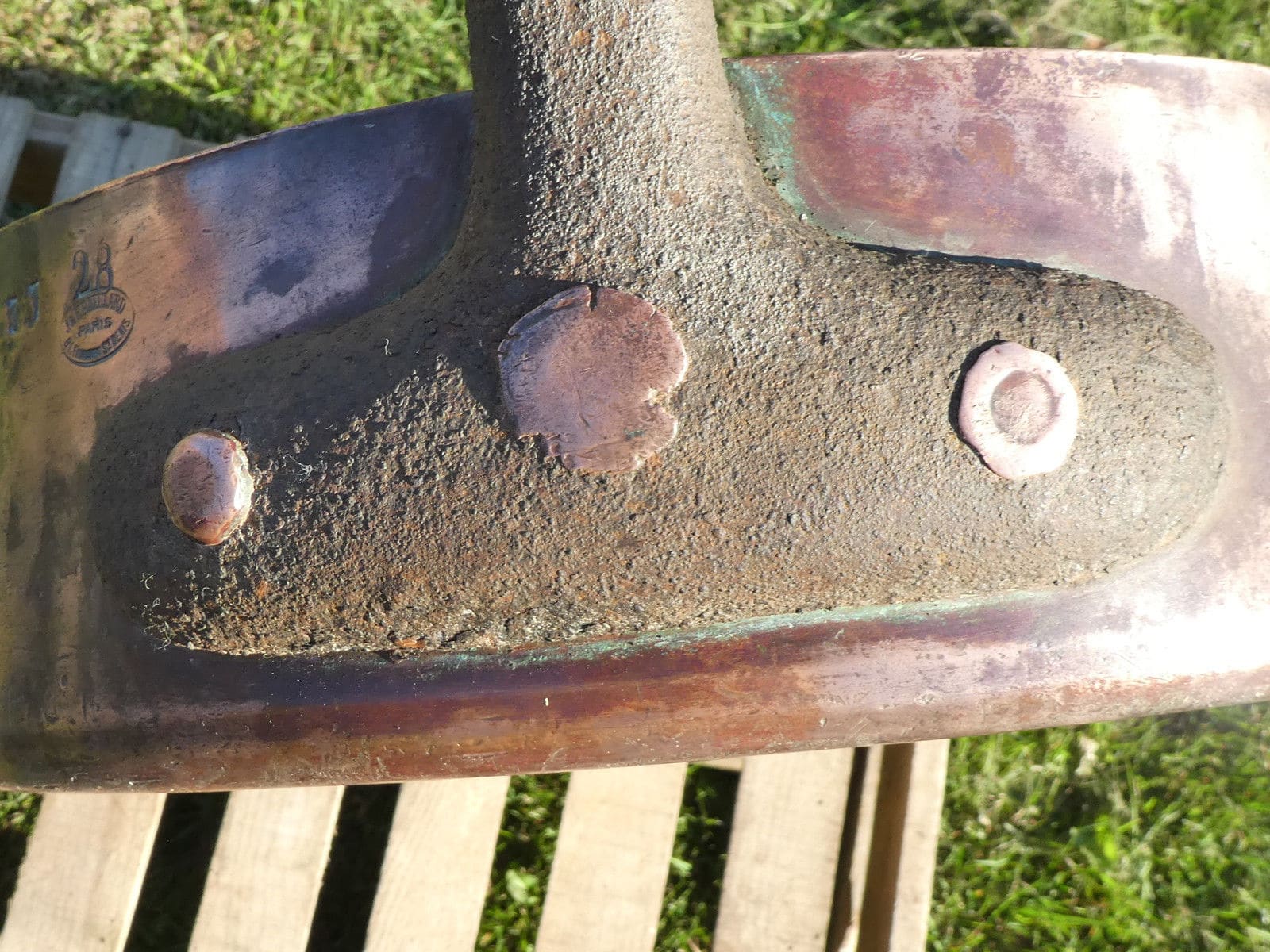
Brass won’t rust, so I don’t have to worry about it corroding away, but it looks grody. I’m going to want to get the crud out.
- If it’s minor — for example, traces of dried copper cleaner trapped in the crevices — I may be able to clean it up at home with hot water and gentle poking with a toothpick. I keep working through Question 3.
- If it’s buildup that includes cooking grease, retinning will take care of it much more throughly than I could, and I’d probably scratch the copper around the handle area if I tried. This is a good case for retinning. I proceed to Question 4.

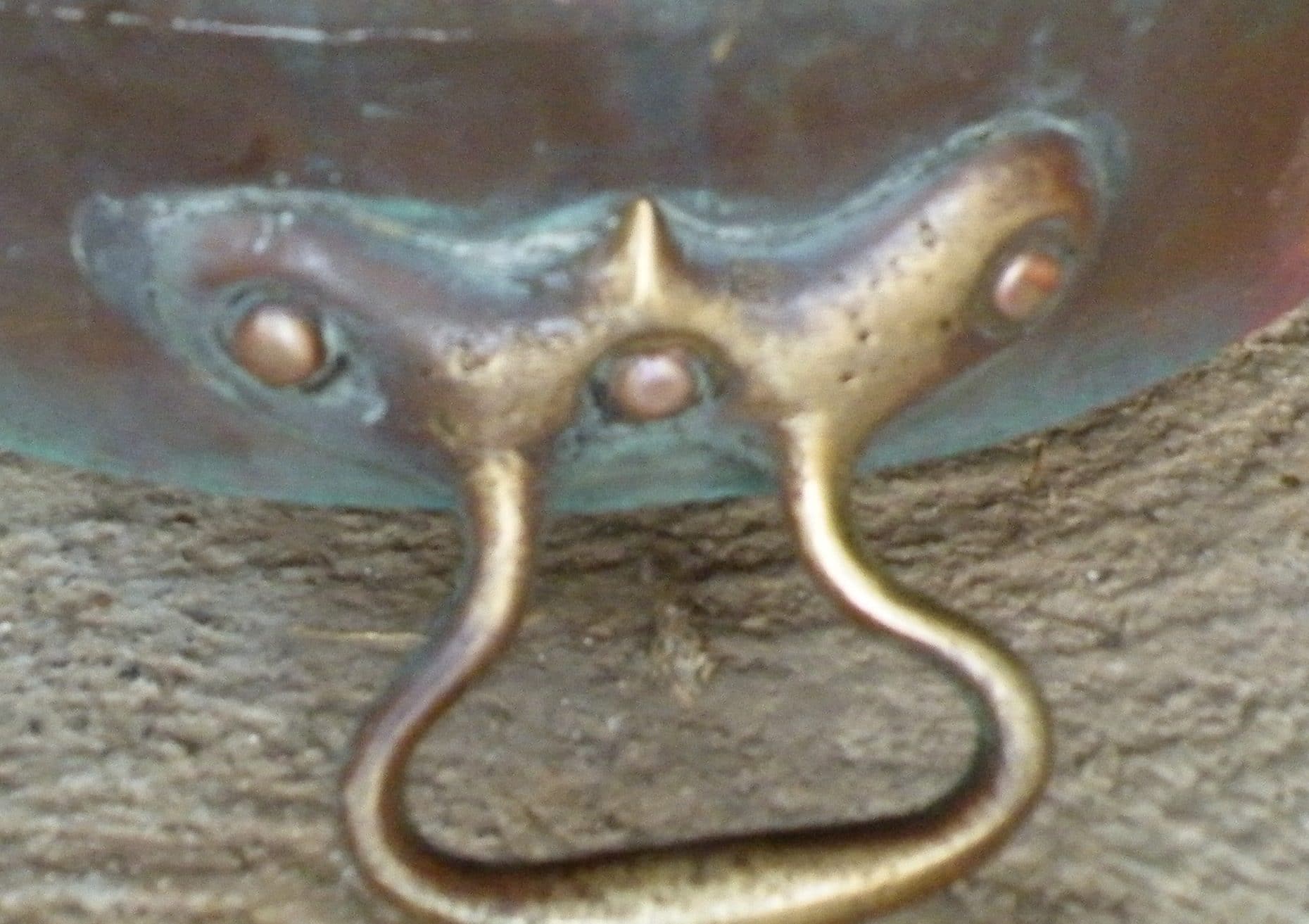
A pan that doesn’t sit flat can be very frustrating to use. If you have an electric, ceramic, or halogen cooktop, a pan like this will wobble on the burners. With a gas cooktop, the grill plates and flame heat are more forgiving for an uneven base, but the pot will still be unsteady on a countertop.
The good news is that a retinner checks every pan and can often improve an uneven base and correct the convexity. But the bad news is that it’ll never be perfectly flat again — copper that’s stretched out can’t be compressed. The best a retinner may be able to do is pop a convex base back up into the pan and then gently hammer it to try to even it out.
- If I’m ever planning to cook with the pan, it’s worth retinning it to get the benefit of the repair to the base. I proceed to Question 4.
- If I’m never planning to cook with the pot and plan to have it on display, a flat base isn’t crucial. I keep working through the rest of Question 3.

Some old copper pots have been piled up, dropped, wedged inside other pots, or just banged around, and a pot can get crushed out of shape. This is not necessarily fatal to the pot’s function, but it means that a fitted lid won’t sit properly on it. I can always use a lollipop-style “universal lid,” of course, but if the pot already comes with its own fitted lid or if I plan to find a fitted lid for it, they will never fit it as they are intended. Fortunately, this is often fixable — retinners can address this by stretching or compressing pots to get the geometry back in round.
For me, the importance of a pot’s roundness — or lack thereof — depends on my plan for its lid.
- If it’s a cooking pot and it’s out of round, then I need to have a plan for a lid for it.
- If it comes with a fitted lid or if I plan to get one for it, it’s worth retinning the pot to fix the geometry. I proceed to Question 4.
- If I don’t mind using a universal lid with it, then I don’t necessarily need to fix the geometry in order to cook with it. I keep working through Question 3.
- If it’s a pot for display and it’s out of round, then I need to consider whether I’ll display it with a lid.
- If I’m fine with it being lidless forever or with using a flat universal lid, I keep working through Question 3.
- If it has a fitted lid, or if I will want to find a fitted lid for it to complete it, it’s worth retinning to get the geometry fixed. I proceed to Question 4.
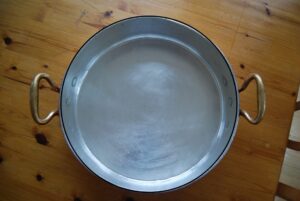
By this I mean dents, torn dovetail seams, cracked handles, loose or missing rivets, or other significant problems. I am willing to overlook a little age- and use-related degradation, but structural weaknesses need to be fixed.
Retinners can fix a whole host of problems, but they’re not miracle workers. I proceed to Question 4.

Fantastic. If I’m fine with the condition of the tin, the pan sits flat, I don’t see any damage that needs to be fixed, and there’s no evidence of handle corrosion that needs to be addressed, I skip to Decision 2.
Question 4: Am I ready to decide?
Great — this is pretty straightforward. I proceed to Decision 2.
Hmmm. Even if the tin is in good condition, the pan could still need a thorough cleaning and restoration. It’s worth taking a good look at its overall state before I make this decision. I go back to Question 3.
Redoing tin and giving the pan a tune-up is pretty routine. I proceed to Decision 3.
Handle cracks, dovetail tears, leaks, dents, a wobbly base, loose rivets, wonky geometry — these may be fixable or they may not. I need to make sure my expectations are reasonable before I decide to move forward.
I copy a photo or two from the listing and email it to my preferred retinner. What does he or she think is possible for this pot? Given my plans for it — for cooking, or just for display — can I live with that outcome?
- If it sounds like the pot can’t be restored to the condition I need, I proceed to Decision 1.
- If I like what I’m hearing, I proceed to Decision 3.
Decision time
I don’t buy the pot.
This is actually a happy ending if it saves me the cost and disappointment of a pot that can’t be what I want it to be. Copper pots last a lifetime if they’re treated with basic respect, but unfortunately not all of them have been. I have a couple of pots that are past their prime and I’m fortunate that I’m able to set them aside as display pieces, but I would hate to buy a pot that I expect to use and find that its leaks or cracks or defects can’t ever be fixed.
It’s taken me some time to build up an understanding of what is and is not possible with restoration, and it helped a lot to talk to my retinner during this process. My experience has been that my retinner doesn’t care how big or small the job is — it’s about whether the pot can be brought in line with my expectations. My retinner wants me to be happy, but I also have a responsibility to cultivate realistic expectations. I’m happy to take advantage of my retinner’s experience and wisdom so I can learn as well.
I have the pot shipped directly to me.
I’ve decided that I want this pot in its current state — it doesn’t need any restoration. Yay! Can’t wait to get it!
I have the pot shipped directly to my preferred retinner.
I’ve set up my PayPal, eBay, and Etsy accounts to have my favorite retinner as an alternate shipping address. When I complete the online purchase, I select that address as the shipping destination. (It’s very hard to change the shipping address after an online purchase — they’re trying to prevent fraud — so it’s much, much better to have it set up in advance.)
My retinner is pretty busy and I want to make sure he or she knows the incoming pot belongs to me.
- I include a note to the seller asking him or her to make sure my name is on the paperwork inside the box.
- I email the retinner to give him or her a heads-up that the package will be coming, and I include a photo of the pot in question from the online listing.
- I keep an eye on the package tracking information and check in again with the retinner when the package is due to arrive.
So far, this arrangement has worked splendidly.
Conclusion
This is how I work through this decision, but everyone’s considerations are different. I’d be interested to hear about your thought process — let me know in the comments.
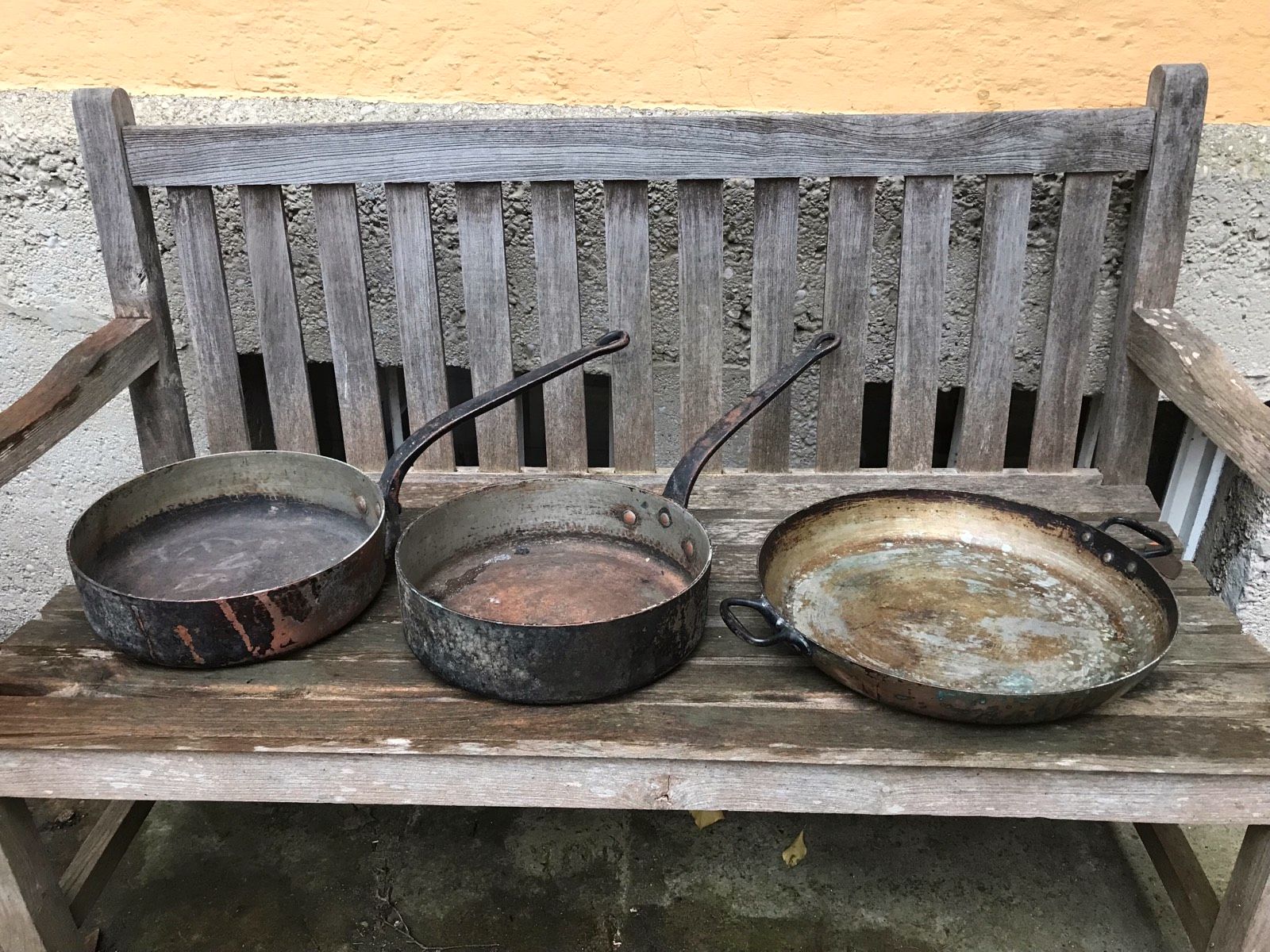

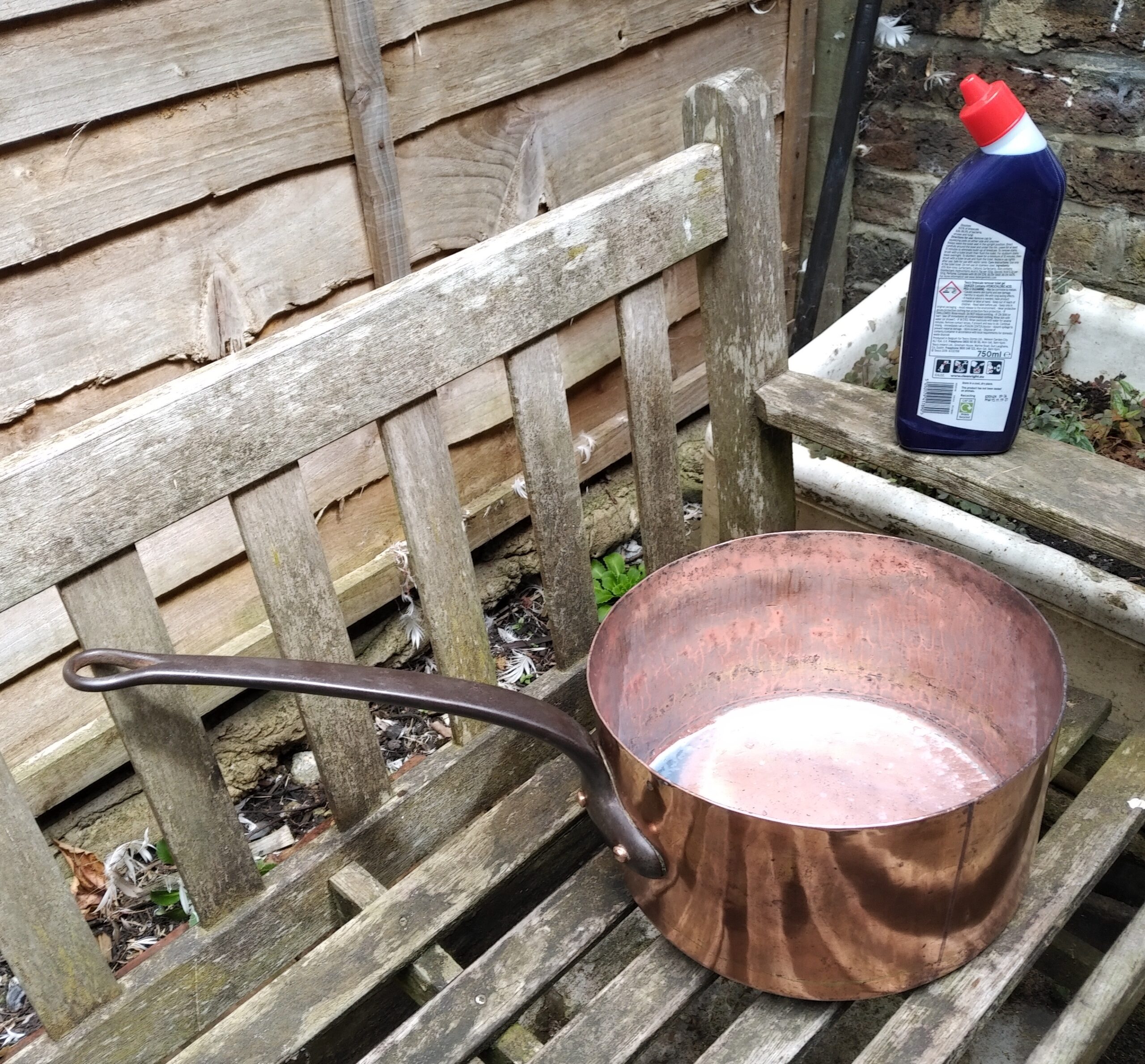

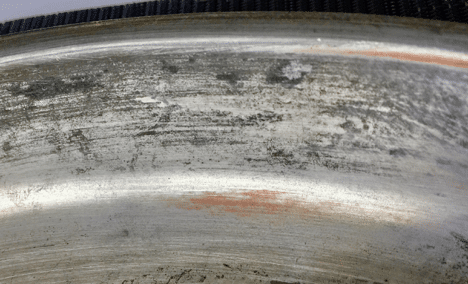

Great post! Thank you. I am in the middle of this decision making process with a set of recently aquired pans marked “A La Menagere”. Some have issues that, while not a hindrance when using, have some visible imperfections. They could also benefit from a retinning.as the interiors appear to be what you describe in Question 2; “…dull dark grey…”
I will take them to a retinner soon for an assessment.
It helped me a lot to send photos to my retinner and get some perspective. Ultimately it’s more about what you’ll accept than any hard and fast rules. I do think it’s worth getting the deep dark gray off, but if it’s taken over the entire surface, it may be too destructive to the tin to try to scrub it off. You’d be better off just retinning it. If the dark gray is patchy, though, it’s a sign there might be usable tin underneath.
I agree with you, VFC, that shipping directly to the retinner is the best move to save time, double shipping and some postage. I’m often on pins and needles waiting to get it home. The downside is not seeing it as purchased though.
I’ve retinned most of the things I’m purchased except one stockpot. It’s fun to start off with that new shine. Do you generally stick to one retinner or try out several?
Hi Sus — Yes, the downside is not seeing the piece beforehand. It complicates the purchase feedback process, too — do I rate the piece on its condition when it arrived at the tinner, even though I can’t see it myself? Or do I rate it when it gets to me, after the tinner has fixed it? My current imperfect solution is to ask the tinner if the piece got there in good shape, and if so, to leave feedback based on timeliness of shipping and quality of packing, which really are important and can be evaluated objectively.
Regarding who I’ve worked with for tinning — I’ve had work done by Rocky Mountain Retinning and East Coast Tinning. I’ve made an effort to tag the Gallery posts accordingly so you can see which pieces were done by whom.